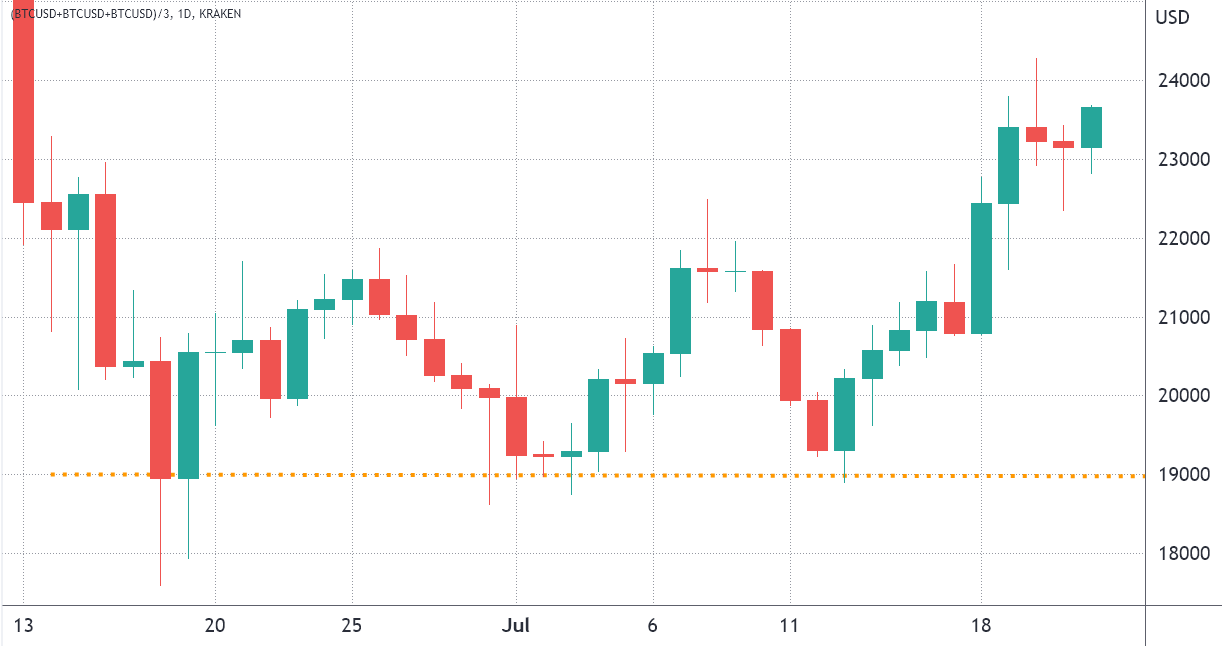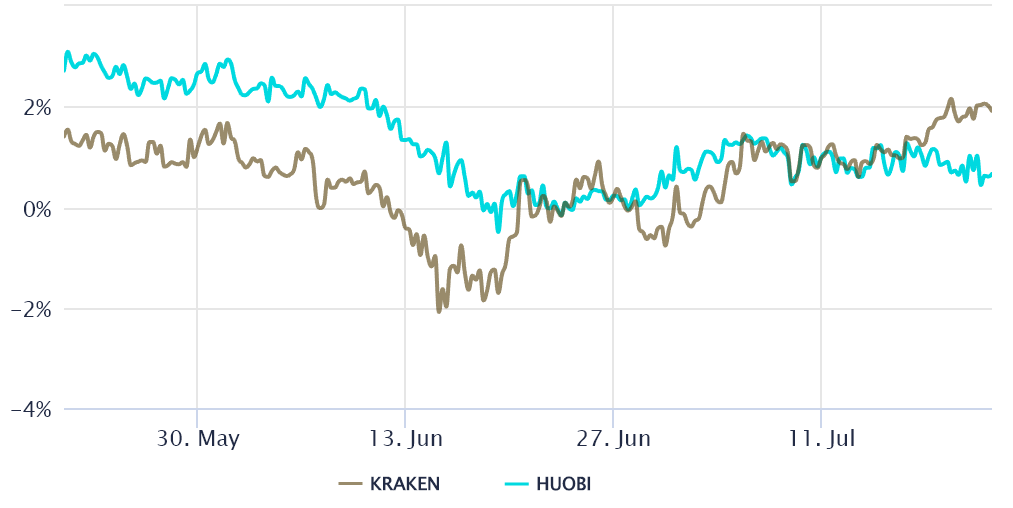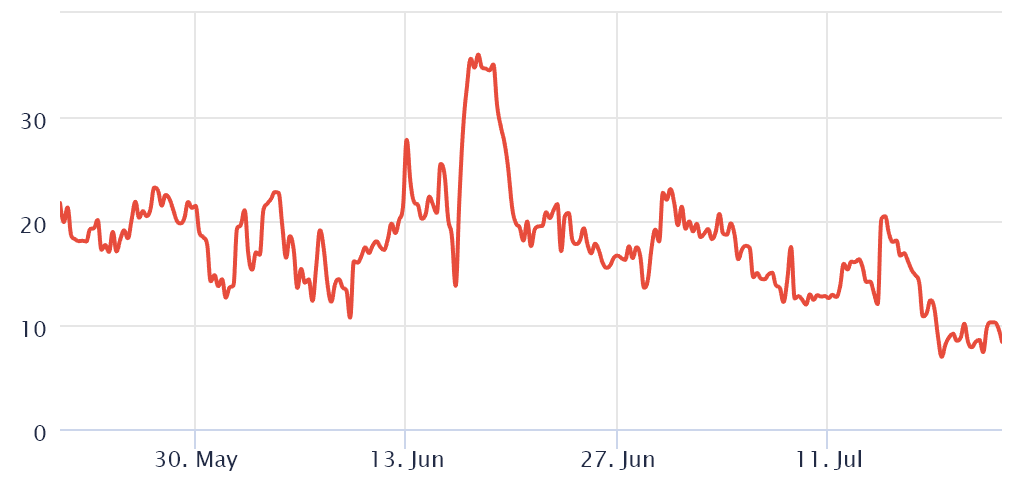
The previous $19,000 Bitcoin (BTC) support level becomes more distant after the 22.5% gain in nine days. However, little optimism has been instilled as the impact of the Three Arrows Capital (3AC), Voyager, Babel Finance and Celsius crises remain uncertain. Moreover, the contagion has claimed yet another victim after Thai crypto exchange Zipmex halted withdrawals on July 20.

Bulls' hopes depend on the $23,000 support strengthening as time goes by, but derivatives metrics show professional traders are still highly skeptical of continuous recovery.
Macroeconomic headwinds favor scarce assets
Some analysts attribute the crypto market strength to China’s lower-than-expected gross domestic product data, causing investors to expect further expansionary measures by policymakers. China’s economy expanded 0.4% in the second quarter versus the previous year, as the country continued to struggle with self-imposed restrictions to curb another outbreak of COVID-19 infections, according to CNBC.
The United Kingdom's 9.4% inflation in June marked a 40-year high, and to supposedly aid the population, Chancellor of the Exchequer Nadhim Zahawi announced a $44.5 billion (GBP 37 billion) assistance package for vulnerable families.
Under these circumstances, Bitcoin reversed its downtrend as policymakers scrambled to solve the seemingly impossible problem of slowing economies amid ever-increasing government debt.
However, the cryptocurrency sector faces its own issues, including regulatory uncertainties. For instance, on July 21, the United States Securities and Exchange Commission (SEC) labeled nine tokens as "crypto asset securities," thus not only falling under the regulatory body's purview but liable for having failed to register with it.
Expressly, the SEC referred to Powerledger (POWR), Kromatika (KROM), DFX Finance (DFX), Amp (AMP), Rally (RLY), Rari Governance Token (RGT), DerivaDAO (DDX), LCX, and XYO. The regulator brought charges against a former Coinbase product manager for "insider trading" after they allegedly used non-public information for personal benefit.
Currently, Bitcoin investors face too much uncertainty despite the seemingly helpful macroeconomic backdrop, which should favor scarce assets such as BTC. For this reason, an analysis of derivatives data is valuable in understanding whether investors are pricing higher odds of a downturn.
Pro traders remain skeptical of price recovery
Retail traders usually avoid quarterly futures due to their price difference from spot markets. Still, they are professional traders' preferred instruments because they prevent the perpetual fluctuation of contracts' funding rates.
These fixed-month contracts usually trade at a slight premium to spot markets because investors demand more money to withhold the settlement. But this situation is not exclusive to crypto markets, so futures should trade at a 4% to 10% annualized premium in healthy markets.

The Bitcoin's futures premium flirted with the negative area in mid-June, something is typically seen during extremely bearish periods. The mere 1% basis rate, or annualized premium, reflects professional traders' unwillingness to create leverage long (bull) positions. Investors remain skeptical of the price recovery despite the low cost of opening a bullish trade.
One must also analyze the Bitcoin options markets to exclude externalities specific to the futures instrument. For example, the 25% delta skew is a telling sign when market makers and arbitrage desks are overcharging for upside or downside protection.
In bear markets, options investors give higher odds for a price dump, causing the skew indicator to rise above 12%, while the opposite holds true during bullish markets.

The 30-day delta skew peaked at 21% on July 14 as Bitcoin struggled to break the $20,000 resistance. The higher the indicator, the less inclined options traders are to offer downside protection.
More recently, the indicator moved below the 12% threshold, entering a neutral area, and no longer sitting at the levels reflecting extreme aversion. Consequently, options markets currently display a balanced risk assessment between a bull run and another re-test of the $20,000 area.
Some metrics suggest that the Bitcoin cycle bottom is behind us, but until traders have a better view of the regulatory outlook and centralized crypto service providers' liquidity as the Three Arrows Capital crisis unfolds, the odds of breaking above $24,000 remain uncertain.
author and do not necessarily reflect the views of Cointelegraph. Every investment and trading move involves risk. You should conduct your own research when making a decision.
Title: Pro Bitcoin traders are uncomfortable with bullish positions
Sourced From: cointelegraph.com/news/pro-bitcoin-traders-are-uncomfortable-with-bullish-positions
Published Date: Fri, 22 Jul 2022 17:30:00 +0100






